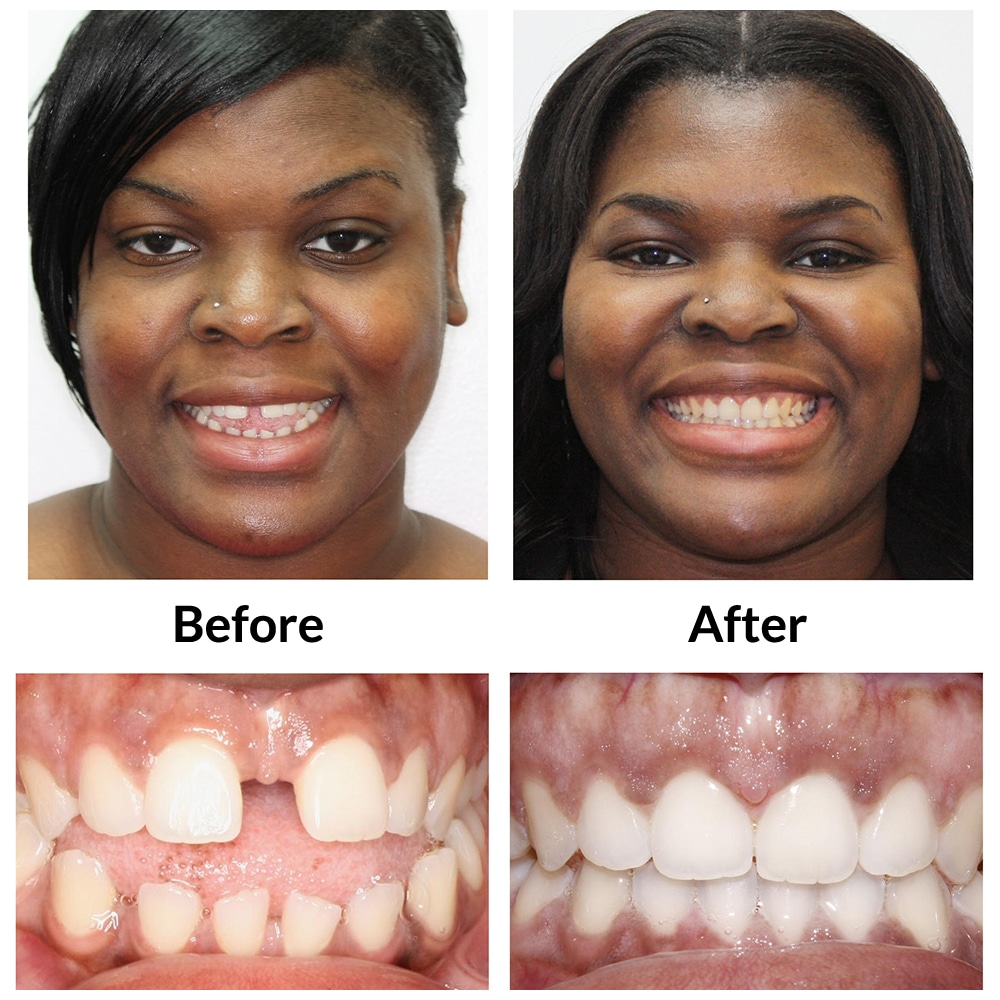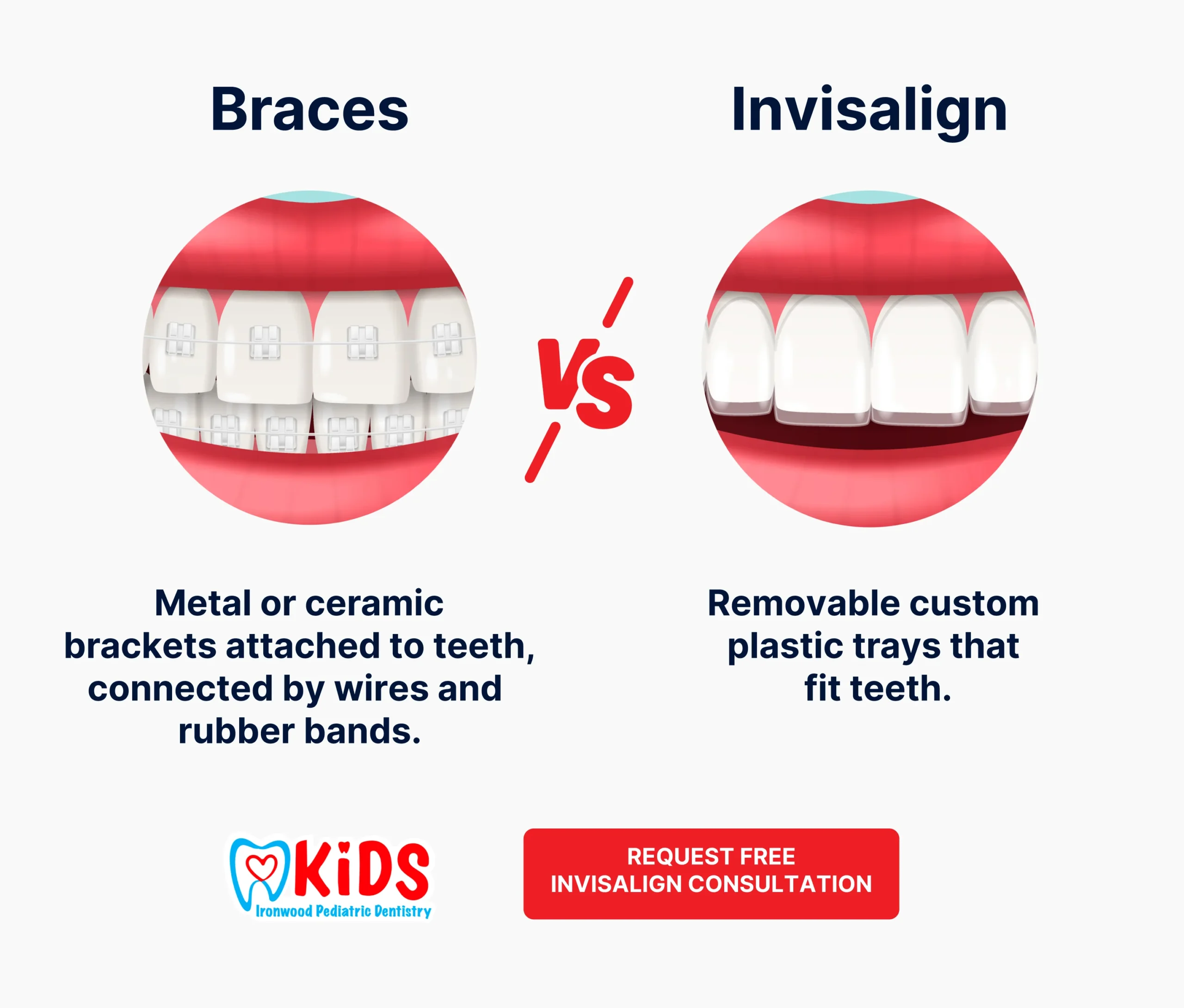Frequently Asked Questions Concerning Invisalign: Everything You Required to Know
Frequently Asked Questions Concerning Invisalign: Everything You Required to Know
Blog Article
Invisalign vs. Standard Dental braces: Which Option Is Right for You?
When taking into consideration orthodontic treatment, the option between Invisalign and conventional dental braces presents several vital factors that warrant mindful evaluation. Invisalign supplies a discreet alternative with detachable aligners, while conventional braces give a more noticeable yet reliable solution for serious misalignment. Each alternative includes distinct advantages and drawbacks connected to aesthetics, comfort, treatment period, and expense. Comprehending these subtleties is essential for making a notified decision that lines up with your personal preferences and lifestyle. The concern stays: which choice will ideal satisfy your orthodontic needs and expectations?
Overview of Therapy Choices

On the other hand, conventional dental braces include steel brackets and cables that are adhered to the teeth. This approach uses constant pressure in time to accomplish alignment. While reliable for complicated orthodontic issues, traditional dental braces require routine sees for adjustments and can position difficulties in keeping oral hygiene because of the trouble of cleaning about braces and wires.
Both alternatives have their values, and the selection typically depends upon details dental conditions, way of life preferences, and person compliance. Ultimately, seeking advice from an orthodontic specialist is important for determining one of the most appropriate treatment strategy tailored to individual demands. Comprehending the nuances of each option can substantially influence the overall success of orthodontic treatment.
Visual Factors To Consider
A significant factor affecting the selection in between Invisalign and conventional braces is the visual charm each therapy offers. Invisalign aligners are crafted from clear plastic, making them practically undetectable when used.
On the other hand, traditional braces contain steel brackets and wires, which can be extra visible. While developments in orthodontic modern technology have led to the growth of smaller braces and colored elastics, typical dental braces still maintain an even more obvious profile. For some people, the presence of dental braces might prevent them from looking for essential treatment.
Eventually, the selection in between Invisalign and typical braces might depend upon individual choices regarding appearances. People who prioritize discretion typically favor Invisalign, while those that are less worried about exposure might go with typical braces. Understanding the visual effects of each option is important for making an educated decision that lines up with one's lifestyle and preferences.
Convenience and Convenience

In regards to comfort, Invisalign aligners are detachable, allowing clients to enjoy their preferred foods without limitation and maintain ideal oral health. Brushing and flossing are simplified, as the aligners can be taken out during these routines, whereas conventional dental braces require cautious maneuvering around brackets and cables.
In contrast, typical braces demand regular changes, making them less practical for those with active routines. On the whole, the convenience and convenience of Invisalign make it an appealing choice for several people seeking orthodontic treatment.
Treatment Duration and Efficiency
While both Invisalign and standard dental braces work in fixing oral misalignments, the duration of therapy can differ dramatically between both choices. Typically, Invisalign treatment can take anywhere from 12 to 18 months, depending upon the complexity of the instance. The clear aligners function by gradually changing teeth right into their preferred placements, and normal follow-ups with an orthodontist assistance ensure progress stays on course.
On the other hand, typical dental braces frequently need a longer dedication, typically ranging from 18 months to 3 years. This is due to their fixed nature and the usage of braces and wires, which can be more efficient for complex situations and extreme imbalances (Invisalign). The treatment efficiency of standard dental braces is well-documented, as they enable specific changes and more better control over tooth activity
Inevitably, the selection in between Invisalign and standard dental braces may rest on both the expected treatment duration and the particular dental problems handy. Consulting with an orthodontist is critical, as they can give customized referrals based upon private requirements, making sure the selected method straightens with preferred results and timeframes.
Price Comparison and Insurance Coverage Options
Cost plays a substantial function in the decision-making process for individuals thinking about orthodontic treatment, whether choosing Invisalign or typical dental braces. Typically, the cost of Invisalign arrays from $3,000 to $8,000, while standard braces generally cost in between $2,000 and $6,000. Aspects influencing these expenses include the complexity of the case, the duration of treatment, and geographical area.
Insurance insurance coverage can significantly impact out-of-pocket costs. Several dental insurance plans give partial insurance coverage for orthodontic therapies, but the specifics can differ widely. It is crucial for people to evaluate their insurance plan to identify the level of protection for either alternative. Typically, traditional dental braces may be extra often covered by insurance strategies contrasted to Invisalign, which some insurance providers categorize as an aesthetic treatment.
Furthermore, several orthodontic techniques supply adaptable settlement plans, making both treatment alternatives more accessible. Patients must visit this page make inquiries regarding prospective financing options and discounts for upfront repayments. Examining the complete cost, including insurance coverage advantages and payment strategies, is crucial for making an informed decision that aligns with both aesthetic preferences and spending plan factors to consider.

Final Thought
In summary, the option between Invisalign and traditional braces rests on several elements, consisting of visual choices, comfort, treatment period, and expense. Invisalign provides a discreet, detachable choice that promotes dental health and dietary versatility, while conventional braces might be preferable for intricate oral concerns and commonly come with a lower price factor. Eventually, appointment with an orthodontist is vital to examine specific scenarios and figure out one of the most ideal treatment option for achieving optimum dental positioning.
When taking into consideration orthodontic therapy, next page the selection in between Invisalign and standard braces offers several essential aspects that warrant careful analysis.Contrasting Invisalign and traditional dental braces reveals distinctive treatment alternatives for orthodontic adjustment.While both Invisalign and typical braces are reliable in remedying dental imbalances, the period of therapy can vary significantly in between the 2 choices.Price plays a substantial duty in the decision-making procedure for people taking into consideration orthodontic therapy, whether deciding for Invisalign or standard dental braces.In recap, the choice between Invisalign and typical dental braces hinges on numerous factors, consisting of visual preferences, comfort, treatment duration, and expense.
Report this page